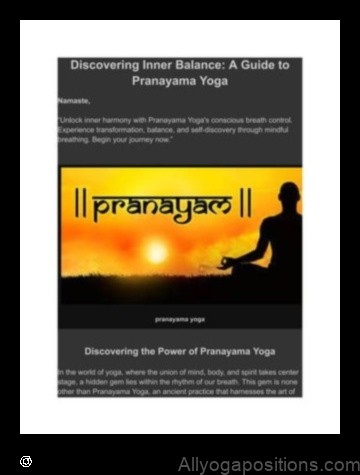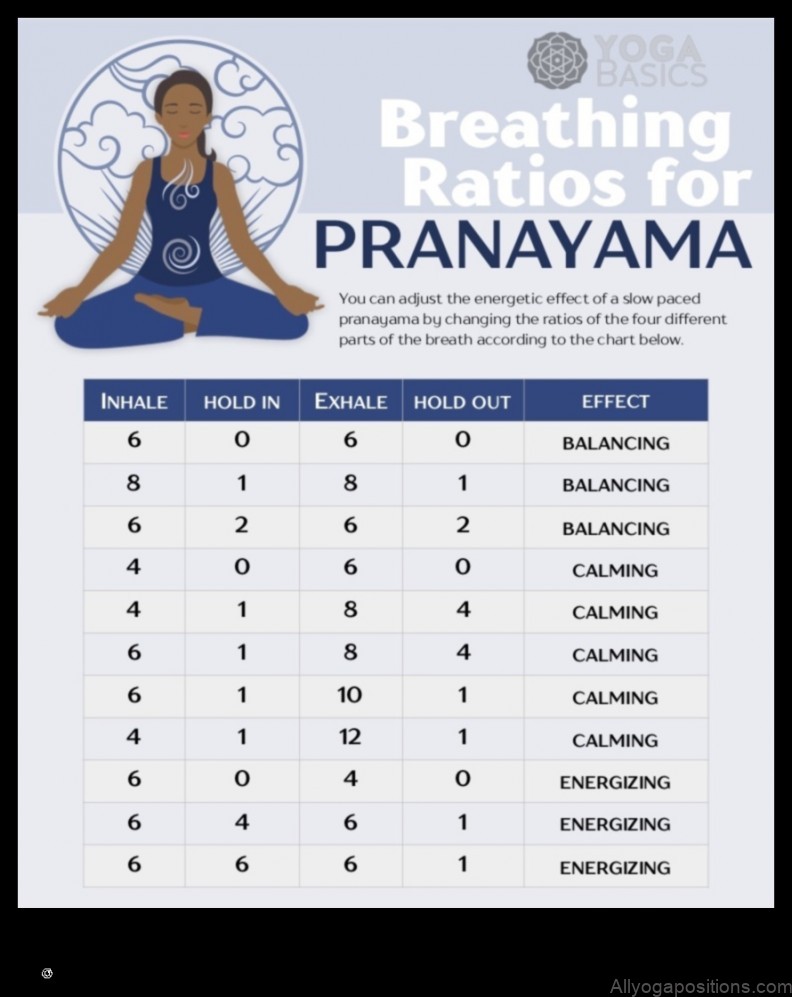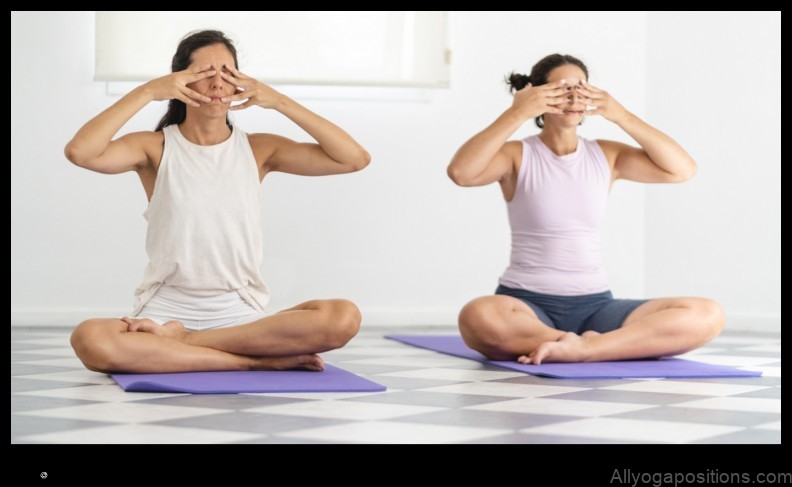
Harmony in Breath: Yoga for Pranayama
Pranayama is a breathing exercise that is used in yoga. It can help to improve your breathing for meditation, relaxation, or athletic performance.
This article will provide you with an introduction to pranayama, including what it is, what benefits it can offer, and how to do it.
We will also provide some tips for beginners and advanced practitioners, as well as information on pranayama for specific conditions.

What is Pranayama?
Pranayama is a Sanskrit word that means “extension of life force.” It is a breathing exercise that is used in yoga to control the breath and improve its flow.
Pranayama is believed to have a number of benefits, including reducing stress, improving focus, and boosting energy levels. It can also help to improve your breathing for meditation, relaxation, or athletic performance.
Benefits of Pranayama
Pranayama has been shown to have a number of benefits, including:
- Reduced stress
- Improved focus
- Boosted energy levels
- Improved sleep
- Reduced pain
- Improved athletic performance
- Enhanced spiritual development

How to do Pranayama
Pranayama is a simple practice that can be done by anyone. Here are the basic steps:
- Sit in a comfortable position with your spine straight.
- Close your eyes and relax your body.
- Breath in slowly and deeply through your nose.
- Hold your breath for a few seconds.
- Breath out slowly and completely through your mouth.
- Repeat this process for several minutes.
You can gradually increase the length of time you hold your breath as you become more comfortable with the practice.
Common Mistakes in Pranayama
There are a few common mistakes that people make when practicing pranayama, including:
- Breathing too fast
- Holding your breath for too long
- Breathing through your mouth
- Tensioning your body
To avoid these mistakes, it is important to practice pranayama slowly and with focus. It is also important to listen to your body and stop if you feel any discomfort.
Pranayama for Beginners
If you are new to pranayama, it is important to start slowly and gradually increase the length of time you practice. Here are a few pranayama exercises that are good for beginners:
- Breath of Fire
- Ujjayi Breath
- Kapalbhati Breath
- Sitali Breath
- Nauli Kriya
You can find more information about these exercises in our article on pranayama for beginners.
Pranayama for Advanced Practitioners
As you become more experienced with pranayama, you can start to experiment with more advanced techniques. Here are a few pranayama exercises that are good for advanced practitioners:
- Bhramari Breath
- Anuloma Viloma Breath
- Nadi Shodhana Breath
- Surya Bhedana Breath
- Chandra Bhedana Breath
You can find more information about these exercises in our article on pranayama for advanced practitioners.
Pranayama for Specific Conditions
Pranayama can be helpful for a variety of conditions, including:
- Stress
- Anxiety
- Depression
- Insomnia
-
Topic Answer Breath The act of inhaling and exhaling air through the nose or mouth. Harmony A state of balance and agreement. Yoga A mind-body practice that originated in ancient India. Pranayama A breathing exercise that is used in yoga. Meditation A practice that involves training the mind to focus on a particular object or thought. II. What is Pranayama?
Pranayama is a Sanskrit word that means “control of the breath”. It is a breathing exercise that is used in yoga to improve the flow of prana, or life force, through the body. Pranayama can help to improve your health and well-being in a number of ways, including reducing stress, improving sleep, and boosting your immune system.
Benefits of Pranayama
Pranayama has many benefits for both physical and mental health. These benefits include:
- Improved breathing and lung function
- Reduced stress and anxiety
- Increased energy and vitality
- Improved sleep quality
- Reduced pain
- Enhanced athletic performance
- Improved mental clarity and focus
- Reduced risk of chronic diseases
Pranayama is a safe and effective practice that can be enjoyed by people of all ages and fitness levels. It is a powerful tool for improving overall health and well-being.
IV. How to do Pranayama
Pranayama is a breathing exercise that is used in yoga. It can help to improve your breathing for meditation, relaxation, or athletic performance. There are many different types of pranayama, but some of the most common include:
- Breathing in through the nose and out through the mouth
- Holding your breath for a few seconds after inhaling or exhaling
- Breathing in and out through one nostril at a time
- Breathing in and out slowly and deeply
To get started with pranayama, it is important to find a quiet place where you can relax and focus on your breathing. You can sit in a comfortable position, such as on a chair or on the floor with your legs crossed. Close your eyes and begin to breathe slowly and deeply. As you breathe in, imagine that you are drawing energy into your body. As you breathe out, imagine that you are releasing stress and tension.
You can practice pranayama for a few minutes each day, or you can practice it for longer periods of time. If you are new to pranayama, it is important to start slowly and gradually increase the length of time that you practice.
Pranayama is a safe and effective way to improve your breathing and your overall health. However, it is important to consult with your doctor before starting any new exercise program.
V. Common Mistakes in Pranayama
There are a few common mistakes that people make when practicing pranayama. These mistakes can lead to discomfort or even injury.
Breathing too fast or too slow. It is important to find a rhythm that is comfortable for you and to breathe deeply and evenly.
Holding your breath. Holding your breath can be dangerous and should be avoided.
Forcefully contracting your muscles. This can lead to tension and pain.
Overdoing it. Pranayama is a gentle practice and should be done in moderation.If you are experiencing any discomfort while practicing pranayama, stop and consult with a qualified yoga teacher.
VI. Pranayama for Beginners
Pranayama for beginners should be simple and easy to follow. The goal is to get started with pranayama and learn the basics of how to breathe properly. Some simple pranayama exercises for beginners include:
- Diaphragmatic breathing
- Alternate nostril breathing
- Ujjayi breath
- Breath of fire
These exercises can be done for a few minutes each day, and they can help to improve your breathing, relaxation, and focus.
VII. Pranayama for Advanced Practitioners
Pranayama for advanced practitioners is a more intense and challenging form of pranayama that is designed to help you progress further on your yoga journey. It is not recommended for beginners, as it can be dangerous if practiced incorrectly. If you are interested in learning more about pranayama for advanced practitioners, it is important to find a qualified teacher who can guide you safely.
Some of the benefits of pranayama for advanced practitioners include:
- Increased energy levels
- Improved focus and concentration
- Deeper relaxation
- Enhanced intuition
- Spiritual awakening
If you are ready to take your pranayama practice to the next level, here are some tips for advanced practitioners:
- Start slowly and gradually increase the intensity of your practice over time.
- Listen to your body and stop if you feel any discomfort.
- Practice pranayama in a quiet, peaceful environment.
- Be mindful of your breath and focus on your intention for each practice.
Pranayama for advanced practitioners can be a powerful tool for transformation and growth. By practicing with care and awareness, you can unlock the full potential of your breath and experience the many benefits of pranayama.
VIII. Pranayama for Specific ConditionsPranayama can be used to help manage a variety of health conditions, including:
- Stress
- Anxiety
- Depression
- Insomnia
- High blood pressure
- Heart disease
- Asthma
- Chronic pain
If you are considering using pranayama to help manage a health condition, it is important to talk to your doctor first. Pranayama can be a safe and effective way to manage many health conditions, but it is important to make sure that it is appropriate for you.
IX. Yoga Nidra
Yoga Nidra is a deep state of relaxation that is often described as “yogic sleep”. It is a powerful tool for stress relief, relaxation, and spiritual growth.
Yoga Nidra is practiced lying down in a comfortable position. The practitioner is guided through a series of relaxation techniques, which help to quiet the mind and body. As the mind becomes still, the practitioner is able to access the subconscious mind and experience deep states of relaxation and peace.
Yoga Nidra is a safe and effective practice for people of all ages and levels of experience. It is a powerful tool for stress relief, relaxation, and spiritual growth.
FAQ
Q: What is pranayama?
A: Pranayama is a breathing exercise that is used in yoga. It is said to improve the flow of prana (life force energy) through the body, and can be used for a variety of purposes, including relaxation, meditation, and athletic performance.Q: What are the benefits of pranayama?
A: Pranayama has been shown to have a number of benefits, including:- Reduced stress and anxiety
- Improved sleep
- Increased energy levels
- Improved focus and concentration
- Reduced pain
- Improved athletic performance
Q: How do I do pranayama?
A: There are many different ways to do pranayama, but some of the most common techniques include:- Ujjayi breathing
- Breathing through one nostril (Nadi Shodhana)
- Alternate nostril breathing (Anuloma Viloma)
- Kapalbhati breathing
Table of Contents
Maybe You Like Them Too
- Meditation and Forgiveness Letting Go of the Past for Inner Freedom
- Meditation and Sleep 5 Techniques for a Restful Night
- Chaturanga Dandasana The 4-Limbed Staff Pose That Strengthens and Tones
- Mindful Parenting A Guide to Fostering Connection and Reducing Stress
- Joyful Journey Yoga for Delight – A Guide to Finding Happiness and Well-Being
